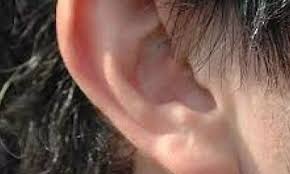Toulouse, France – A groundbreaking study has revealed that sex is a more significant factor in hearing sensitivity than age, with women demonstrating significantly more sensitive hearing than men across diverse global populations. The research, published in the journal Scientific Reports, challenges existing assumptions about hearing and highlights the complex interplay of biological and environmental factors.
Researchers, led by Dr. Patricia Balaresque from the Center for Biodiversity and Environmental Research (CRBE) in Toulouse, France, and including Professor Turi King from the University of Bath, UK, conducted hearing tests on 450 individuals from 13 populations across Ecuador, England, Gabon, South Africa, and Uzbekistan. These populations were selected to represent a wide range of ecological and cultural contexts, including underrepresented rural and non-European groups.
The study focused on measuring Transient-Evoked Otoacoustic Emissions (TEOAE), which indicate the sensitivity of the cochlea in the ear to different sound amplitudes and frequencies. The results showed that, on average, women had two decibels more sensitive hearing than men, a finding consistent across all studied populations.
“We were surprised to find that women had two decibels more sensitive hearing across all the populations we measured, and this accounted for most of the variations between individuals,” said Professor Turi King. “This could be due to different exposure to hormones during development in the womb, due to men and women having slight structural differences in cochlear anatomy.”
The study also found that environmental factors played a significant role in hearing sensitivity. Individuals living in forest areas exhibited the highest hearing sensitivity, while those at high altitudes showed the lowest. Urban populations displayed a shift towards higher frequency hearing, possibly due to adaptation to low-frequency traffic noise.
“Our findings challenge existing assumptions and highlight the need to consider both biological and environmental factors when studying hearing,” stated Dr. Patricia Balaresque. “Identifying drivers behind natural hearing variation will improve our understanding of hearing loss and individual differences in noise tolerance.”
The researchers suggest that further studies are needed to determine whether these variations are due to long-term adaptations to specific environments or other underlying factors.
Disclaimer: This article is based on the provided research and aims to present the findings accurately. It is important to note that scientific research is ongoing, and interpretations may evolve as new data becomes available. Individual experiences with hearing may vary, and this article should not be used as a substitute for professional medical advice.(
More information: Patricia Balaresque et al, Sex and environment shape cochlear sensitivity in human populations worldwide, Scientific Reports (2025). DOI: 10.1038/s41598-025-92763-6












